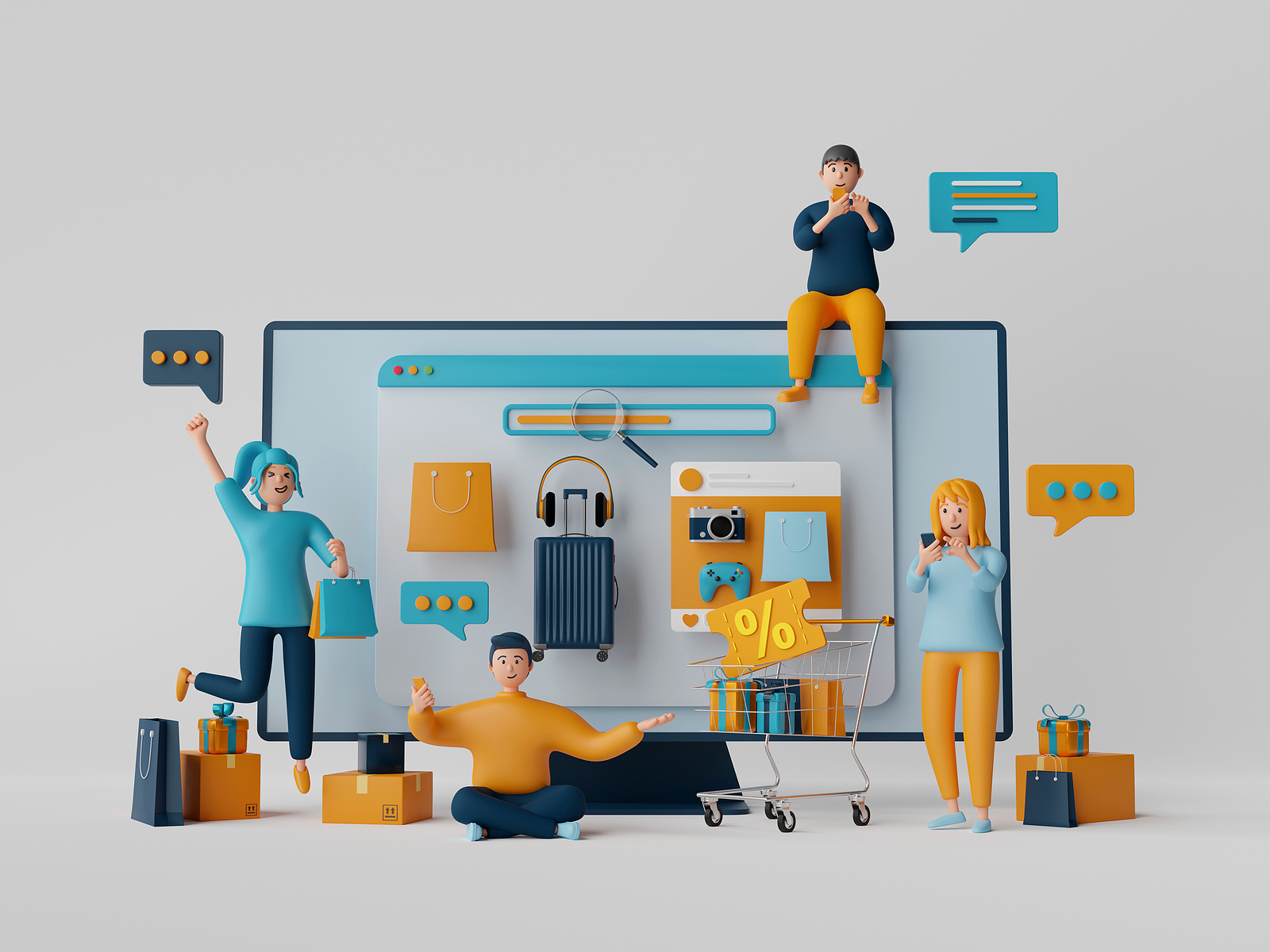Shoppers Are Webrooming and Showrooming. Use it to Your Advantage!

It’s part of a larger trend toward omnichannel commerce, where the customer journey seamlessly flows between digital and physical channels. Therefore, it should come as no surprise that two of the earliest “blended” shopping trends — webrooming and showrooming — are on the rise again. Read on for the latest updates on this phenomenon and how you can use ecommerce trends like this to your advantage.
What Is Webrooming?
Webrooming is a term used to describe a shopping behavior where consumers research products or services online before making a purchase in a physical store. (Think of it in order: “Web” comes first in the word.) In webrooming, customers typically browse websites, read reviews, compare prices and generally gather all the information about the products they’re interested in before heading to a brick-and-mortar store to make the actual purchase.
Webrooming is all about leveraging the convenience and vast resources of the internet to make informed buying decisions. With just a few taps or clicks, consumers can explore a wide range of products, compare price tags from different retailers and even check for any ongoing discounts or promotions. Shoppers often do this to ensure they’re making the right choice before committing to a purchase, especially if the retailer has a poor returns policy. They can narrow down their options and feel confident when they get to the physical store.
Shoppers benefit from the advantages of both online and offline shopping with webrooming. They can physically see and touch the products in-store, evaluating their quality, size, or any other important factors that matter to them. This firsthand experience helps build trust and confidence in the product before making the final decision to buy.
What Is Showrooming?
Showrooming refers to consumers visiting physical retail stores to examine products or try them out before ultimately making their purchase online. It’s essentially the opposite of webrooming. In showrooming, customers take advantage of the hands-on experience offered by brick-and-mortar stores but then opt to make their actual purchase from an online retailer.
The concept of showrooming has gained popularity with the rise of mcommerce that makes the practice easier than ever. Shoppers can visit a physical store, browse the products, ask questions to the store staff and even test out the items they are interested in. This allows them to assess the quality, fit, or any other important factors before deciding whether to buy.
However, rather than buying the product immediately from the store, showrooming shoppers often use their mobile devices to compare prices online, read reviews or seek out alternative options. They may find the same product available at a lower price on an online store, or they might discover additional customer reviews that sway their decision. The convenience and potential cost savings of purchasing online often lead showrooming shoppers to make the final transaction through an online retailer. Other factors like product availability and delivery options can also play a role.
Showrooming & Webrooming Statistics to Know
We’d never make claims without providing the numbers to back them up, so here are some webrooming and showrooming statistics to know in 2023 and beyond:
- 81% of shoppers conduct online research before making a purchase in-store. (GE Capital Retail Bank)
- Before making a major purchase, consumers spend an average of 79 days gathering information online. (GE Capital Retail Bank)
- 88% of consumers consider webrooming an essential part of their shopping process. (Accenture)
- 78% of respondents had increased their webrooming behavior compared to the previous year. (Accenture)
- 60% of consumers engage in showrooming, visiting physical stores to examine products before buying online. (Salesforce)
- 79% of showrooming shoppers used their mobile devices to compare prices while in-store. (Salesforce)
- 46% of smartphone owners used their devices in-store to look up product reviews and compare prices. (Pew Research Center)
- 59% of consumers are likely to webroom and 54% are likely to showroom over the course of the next year. (Forrester)
Why Embrace Webrooming and Showrooming?
Webrooming and showrooming may seem like two ways to lose business, but that’s far from the case. Instead, online retailers should embrace webrooming and showrooming because these shopping behaviors present opportunities to engage with customers at different touchpoints and influence their purchasing decisions.
By acknowledging and catering to the needs of webrooming customers, you can provide them with information and resources for their research phase. This transparency helps build trust and positions you as a reliable source of information. Consider it an upfront investment into the customer relationship. And the ROI comes in the form of brand loyalty and in-store conversions, all because consumers trust your brand.
On the flip side, embracing showrooming allows you to tap into shoppers’ desire for hands-on experiences that physical stores offer. Showcasing items for consumers to see, touch or test gives them a true feel for the product and how it will fit into their lives. But a showroom isn’t enough. Competitive pricing, seamless online shopping experiences and value-added services like fast and reliable shipping are what convert visits into online sales. Customers have to benefit from the convenience and cost savings that attract them in the first place.
Ultimately, embracing webrooming and showrooming enables online retailers to adapt to changing consumer preferences, expand their customer reach, and create a seamless omnichannel experience that meets customers’ needs at every stage of their shopping journey.
How to Leverage Webrooming and Showrooming
Ecommerce sellers can use webrooming and showrooming to their advantage by implementing strategies that bridge the gap between online and offline shopping — by creating those “blended experiences” consumers are seeking.
Start by providing comprehensive product information on your website, including detailed descriptions, high-quality images and customer reviews to assist webrooming customers in their research. Additionally, offering in-store pickup options or partnerships with local brick-and-mortar stores allows customers to experience the products in person while still enjoying the convenience of online shopping.
What about catering to showroomers? Optimizing your mobile websites and apps, ensuring they provide a seamless and user-friendly experience for customers who compare prices and read reviews while in physical stores, is a good place to start. Furthermore, offering competitive pricing, exclusive online discounts, and personalized recommendations based on customer browsing history can encourage showrooming customers to make their purchase online.
By integrating online and offline channels, online retailers can provide a cohesive and convenient shopping experience that caters to the needs of both webrooming and showrooming customers.
Even More 2023 Ecommerce Trends to Know
Kept up so far? There’s a lot of information out there, but that means you can pick and choose the ways you want to update your online store and follow the trends.
It’s easy to get overwhelmed in the rapidly evolving ecommerce space, so we’ve put together a few guides so you can read up on the trends that are still going strong:

Share On:







